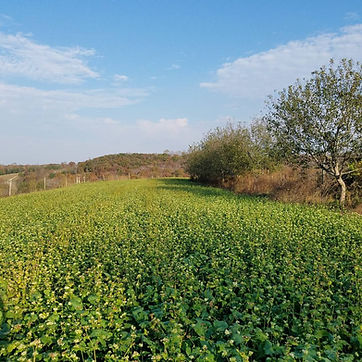

A Farmland Commons is focused on and structured for land ownership (holding title), access, tenure, and equity (through lease conveyance). This goes beyond conservation easements, that while focused on protecting the natural resources, do not address ownership, access and tenure, or equity. The scope of the Commons board includes drafting and agreeing on details of the lease and management agreements, board member term limits, and detailed roles.
A Farmland Commons brings the benefits of nonprofit ownership, such as ability to raise grant and philanthropic funds and take donation of real estate, while ensuring the control, decisions, and vision are rooted locally and ensuring the total scope of the nonprofit is on holding title and supporting management and stewardship of the land and equity and security of the leaseholder(s). The nonprofit structure also provides long term durability, as a structure, with oversight by State Attorney General and IRS to govern nonprofit assets if a nonprofit defaults, closes, dissolves.
A Commons networked ecosystem catalyzes benefits of:
-
Sharing, learning, and being part of Commons models through communications and outreach, connections and networking, shared learning, and membership and engagement opportunities
-
Bringing awareness, value, and collectively ensuring:
-
Multi-generational investments in soil health, land stewardship, and organic agriculture is the foundation carried forward for generations.
-
Long-term lease tenure and equity interest to farmers to support ecological restorative biological agriculture, food production, and agrarian economy.
-
Land legacy through shared stewardship and care of soils, farm ecology and agrarian community, and an example of a right sized model for agricultural relationship to the earth, our community, the food we eat, and each other
-

A Commons Land Trust is a new kind of land trust
Farmland Commons: Model and Structure
The Farmland Commons model connects local and national nonprofit structures through 501(c)(2), 501(c)(25), 501(c)(3), and other aligned entities. Nesting these multiple entities, partnerships, and relationships to create the land-holding affiliate is needed to bring about commoning, resilience, and a durable framework to support the individual farm, the local community, and the national network.
The 501(c)(25) or 501(c)(2) Farmland Commons is limited to purely being a land holding community centered commons structure solely able to:
-
Acquire and hold title to land and real estate
-
Manage and Steward said land and real estate
-
Convey lease and use agreements and hold said relationships
-
Raise and manage capital to do the above
DOWNLOAD THE INTRODUCTION TO THE 501(C)(25) FARMLAND COMMONS
DOWNLOAD THE 501(c)(25) IRS CODE


The following documents and agreements are utilized:
- Equity and Land-Based Practices
- Bylaws
- Lease
- Farm Management Plan
Find the Farmland Commons Templates linked here.

The 501(c)(25) or 501(c)(2) nonprofit legal structure conveys a lease(s) that provides equity, security, affordability, and full autonomy of the day-to-day and year-to-year operations of the farm business, management, and stewardship to the leaseholder(s). Buildings, infrastructure and residences can be owned in the nonprofit structure, by leaseholder(s), or split.



Together, these documents and agreements combined with relationships, intentions, trust, and aligned work create and support these principles:

Farmland is in active use by farmers and stewards who:
-
Hold secure, equitable tenure
-
Provide food, fiber, and medicine to their communities
-
Use regenerative, chemical-free agriculture

Farmland is decommodified by:
-
Holding title in community centered nonprofit commons
-
Limiting use of land as collateral for debt
-
Active agricultural production, ecological stewardship, and regenerating the farm ecosystem

The farms and commons invest in:
-
Soil regeneration, pollinator and habitat design, and investment and in farm buildings, infrastructure, and renewable energy
-
Connections to local food systems, communities, schools, organizations, and aligned farms
